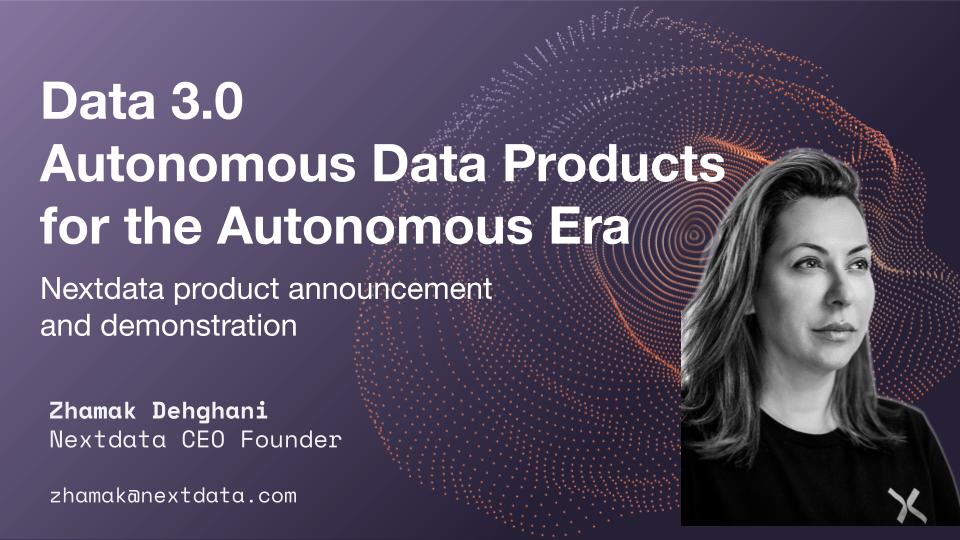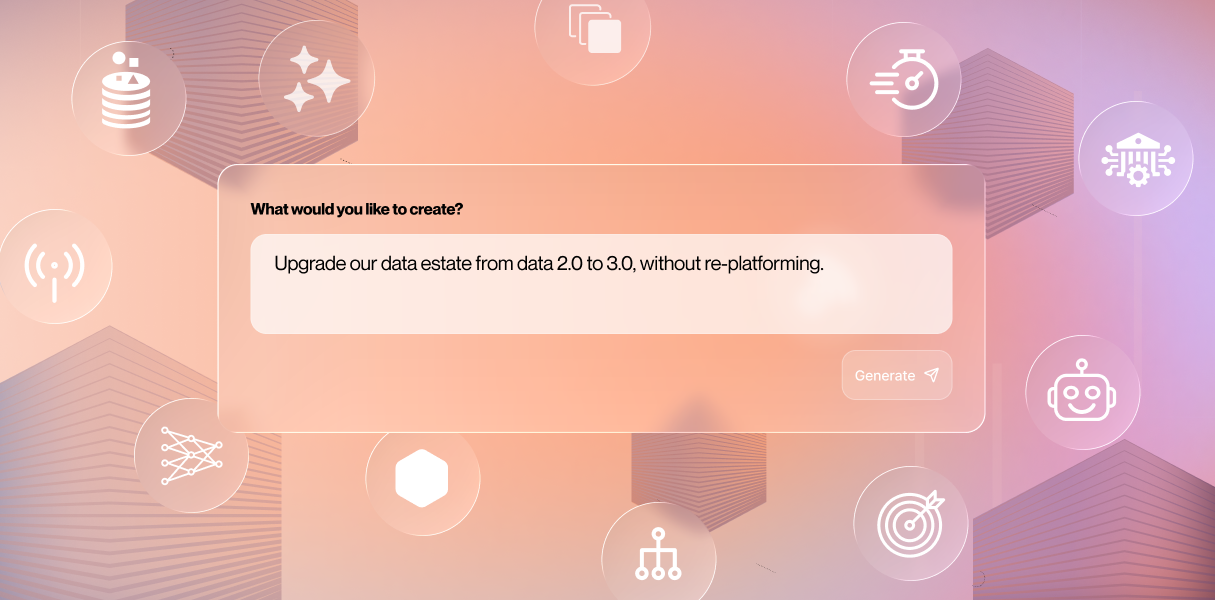Autonomous Data Products
Data for AI
Nextdata OS update: The operating system for Data 3.0
For the past two decades, we’ve built data systems optimized for human consumption—dashboards, reports, and metrics that arrive long after the moment of decision has passed. We stitched together lakes and warehouses, pipelines and governance tools, and called it the modern data stack. It served us well for analytics. But now, in the AI era, the speed mismatch has become impossible to ignore.
AI moves at machine speed. Our data still moves at human speed.
Every organization I meet feels this tension: AI agents and copilots are ready to act in real time, but enterprise data remains locked in brittle pipelines and human-centric workflows. It can take months to safely expose a new dataset to AI. Months! In a world where AI is generating, reasoning, and acting in milliseconds.
That’s why we created Nextdata OS—the first operating system for autonomous data products. With the new capabilities we launched this week, we’re taking another leap forward.
What’s new in Nextdata OS
This update makes three major advances that define what Data 3.0 really means.
1. Unified multimodal data
Enterprises can finally unify structured, unstructured, and unmanaged data—tables, documents, media, purchased datasets—within a single semantic framework. One data product can serve all modes at once: table, vector embedding, file, or MCP endpoint. Governance is enforced continuously, not after the fact. Metadata is continuously updated.
2. Seamless agentic access
AI agents can now discover and consume domain-specific data through MCP APIs that carry rich semantic metadata—lineage, quality, context. Agents get precisely what they need with just a few lines of code; humans can explore through natural-language search.
3. 50× faster creation
Our co-pilot now auto-generates complete, autonomous data products from simple prompts—using Nexty AI or your favorite LLM. It builds the semantic model, transformations, and policy-as-code in minutes. What used to take weeks now takes minutes.
Together, these capabilities move enterprise data management from the old “data lakehouse” pattern into an operating system for AI-ready data—one where data products govern themselves, interoperate natively, and serve both humans and machines safely and continuously.
From Data 2.0 to Data 3.0
Data 2.0 was built for a world of dashboards. Data 3.0 is built for a world of decisions. In this new era, the most valuable data isn’t just clean—it’s context-rich. It carries and continuously maintains its own semantics, policies, and lineage, ready to be consumed directly by AI agents and anything else.
When data becomes autonomous, it can finally move at the speed of business.
See it in action
Join me on October 30 at 8:30 AM PT for a live session, “Data 3.0 - AI-Ready Data- Nextdata OS Product Update & Demo”
I’ll walk through these new capabilities, show how autonomous data products replace fragile pipelines, and demonstrate how enterprises are already using Data 3.0 to power safe, domain-aware AI.
Reserve your seat now—and see how your data can finally keep pace with AI.
--zhamak


.jpg)
.png)







